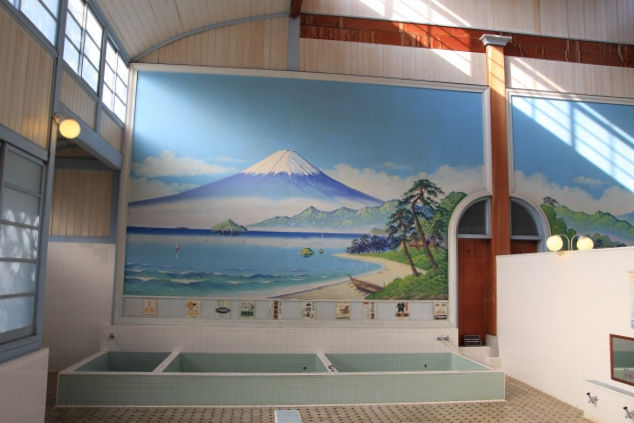Osaka Castle
- BJLC School
- Apr 19, 2021
- 3 min read

You can't miss Osaka Castle (大阪城) if you want to have a historical tour to Osaka.
Apart from being the pride of the people of Osaka, Osaka Castle is also one of the most famous historical sites in Japan. It is a testimony to the ups and downs of the Japanese Warring States period and represents one of the most iconic heroes in Japanese history - Toyotomi Hideyoshi.
Although Osaka Castle is no longer the same as when it was built by Toyotomi Hideyoshi and the symbolic Tenshokaku is now in its third generation, the castle still serves as the symbol of Toyotomi Hideyoshi in the hearts of most Japanese.
The History of Osaka Castle
The Toyotomi Period
Around 1467, the Warring States period began in Japan, with Oda Nobunaga, Toyotomi Hideyoshi and Tokugawa Ieyasu being the three most important figures during period. Oda Nobunaga almost unified the country in the early days, with Tokugawa Ieyasu as his ally and Toyotomi Hideyoshi as his vassal. When Oda Nobunaga killed himself in a revolt, Toyotomi Hideyoshi rose to power as a defender of his lord and unified the country. He later took Tokugawa Ieyasu as his vassal through intermarriage.
Toyotomi Hideyoshi built Osaka Castle in 1583 and used it as a base to unite the world. The astonishing castle only took three years to build, thanks to the hard work of around 100,000 workers.
After Toyotomi Hideyoshi passed away, his son Toyotomi Hideyori then took over the castle.
The Tokugawa Period
In 1614, Tokugawa Ieyasu established the Tokugawa Shogunate government in Edo and ended the Warring States period. Tokugawa Ieyasu launched the Battle of Osaka Summer, destroying the Toyotomi family and destroying Osaka Castle in 1615.
In 1620, the Tokugawa Shogunate began to rebuild Osaka Castle by crushing the original castle underneath. The second generation of Tenshokaku was completed in 1626 and the reconstruction of Osaka Castle was completed in 1629. Unfortunately, the second generation of Tensokaku was destroyed by lightning in 1665.
Tensokaku (天守閣)

The Tensokaku we see today was rebuilt in 1931, imitating the panels of the Toyotomi period's Tensokaku. It has five outer floors and eight inner floors. The highest floor, the eighth, offers a view of the city of Osaka. On the second to seventh floors, you can see the life of the young Toyotomi Hideyoshi, who rose from a commoner to a great hero and lived a life of glory and regret. Tensokaku is the place to visit if you want to learn more about this giant of the Japanese Warring States period.

Renovated in 1997, Tensokaku now features white walls with green roof tiles, gold-leafed tigers and dragon-headed fish figures (meaning "carp leaping over the dragon's gate") on each of the flying eaves.
The Design of Osaka Castle
The boulders, stone walls and moat in Osaka Castle have been preserved ever since Tokugawa period.
Boulders
There are 11 boulders in Osaka Castle - 3 at Otemun, 6 at Sakuramon and 2 at Kyobashi.
These boulders, weighing hundreds of tones, were transported from hundreds of kilometres away when Tokugawa Ieyasu rebuilt Osaka Castle. This goes to show his absolute control over Osaka. And since the stones were so expensive that he wanted to use them to drain Osaka's economic power and reduce the city's influence. Moreover, the huge stones were used to demonstrate his authority and were placed at the gates of the castle to make people submit to the Tokugawa Shogunate.
Stone Walls


If you look closely, you will notice that the stone walls on the outer side of the moat are stacked differently on the left and right sides. Facing the gate, the left side is stacked in a random manner, while the right side is stacked in a neatly arranged manner.
This is because the two sides of the wall were built separately. Although both sides were built in the Tokugawa period, the left side of the wall was built first whereas the right side was built around 7-8 years later after the castle was built. The construction techniques improved and matured over the course of the construction, resulting in the differences as shown.
Osaka Castle Gozabune

Another way to enjoy the beauty of Osaka Castle from different perspectives is taking a Gozabune ride. Gozabune (ござぶね) means the boat that is reserved for nobles.
The Osaka Castle Gozabune is made of approximately 3,000 pieces of gold leaf, replicating Toyotomi Hideyoshi's Gozabune, "Phoenix Maru".
It provides a special experience to get a close look at the stone walls through the transition of seasons.
Osaka Castle Park

Osaka Castle Park covers a total area of 106.7 hectares and is home to many trees. In spring, the park attracts many cherry blossom and plum blossom visitors, while in autumn it is famous for its maple foliage, making it an urban oasis with a variety of sceneries throughout the seasons.
Osaka Castle
The Brisbane Japanese Language and Culture School







Comments